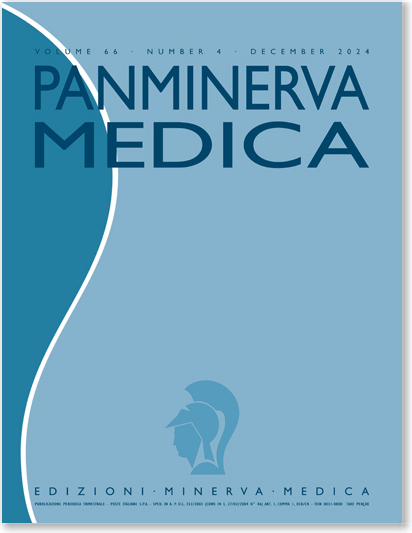 |
JOURNAL TOOLS |
| Opzioni di pubblicazione |
| eTOC |
| Per abbonarsi |
| Sottometti un articolo |
| Segnala alla tua biblioteca |
ARTICLE TOOLS |
| Publication history |
| Estratti |
| Permessi |
| Per citare questo articolo |
| Share |

I TUOI DATI
I TUOI ORDINI
CESTINO ACQUISTI
N. prodotti: 0
Totale ordine: € 0,00
COME ORDINARE
I TUOI ABBONAMENTI
I TUOI ARTICOLI
I TUOI EBOOK
COUPON
ACCESSIBILITÀ
REVIEW MULTIPLE MYELOMA IN 2020: STATE OF THE ART (PART I) Free access
Panminerva Medica 2020 December;62(4):220-4
DOI: 10.23736/S0031-0808.20.04114-2
Copyright © 2020 EDIZIONI MINERVA MEDICA
lingua: Inglese
Autologous stem cell transplantation in multiple myeloma
Giuseppina RICCIUTI 1 ✉, Antonietta FALCONE 1, Nicola CASCAVILLA 1, Giovanni MARTINELLI 2, Claudio CERCHIONE 2
1 Department of Hematology and Bone Marrow Transplant, IRCCS Casa Sollievo della Sofferenza Hospital Foundation, San Giovanni Rotondo, Foggia, Italy; 2 Department of Hematology, IRCCS Istituto Scientifico Romagnolo per lo Studio e la Cura dei Tumori (IRST), Meldola, Forlì-Cesena, Italy
The treatment of patients with multiple myeloma has changed in the last decades, with an improved median survival of 8-10 years. The current treatment for newly diagnosed multiple myeloma patients eligible for autologous transplantation consists of 4 phases: pretransplant, induction, transplant, post-transplant consolidation and maintenance. Even today, a long-term disease control is the goal of multiple myeloma treatment in current clinical practice. In this review we discuss the role of autologous stem cell transplantation in multiple myeloma, the eligibility of patients for transplantation and the usefulness of an upfront tandem transplantation. The assessment of frailty and significant comorbidities plays an important role in determining transplant eligibility. Careful patient selection based on overall health status is crucial to ensure a balance between risks and benefits. In the era of induction regimens with new agents, upfront autologous transplantation remains the standard of care for young patients with newly diagnosed multiple myeloma due to the longer progression-free survival showed in randomized clinical studies. With the currently available data, the tandem transplantation in multiple myeloma may be considered in patients with high-risk cytogenetics, in particular, those who did not receive a new triplet combination or those with a lower response than very good partial response following their first transplantation.
KEY WORDS: Multiple myeloma; Stem cell transplantation; Prognosis

 Login
Login Ricerca
Ricerca


